Halberd - the Weapon of the Early Swiss Armies
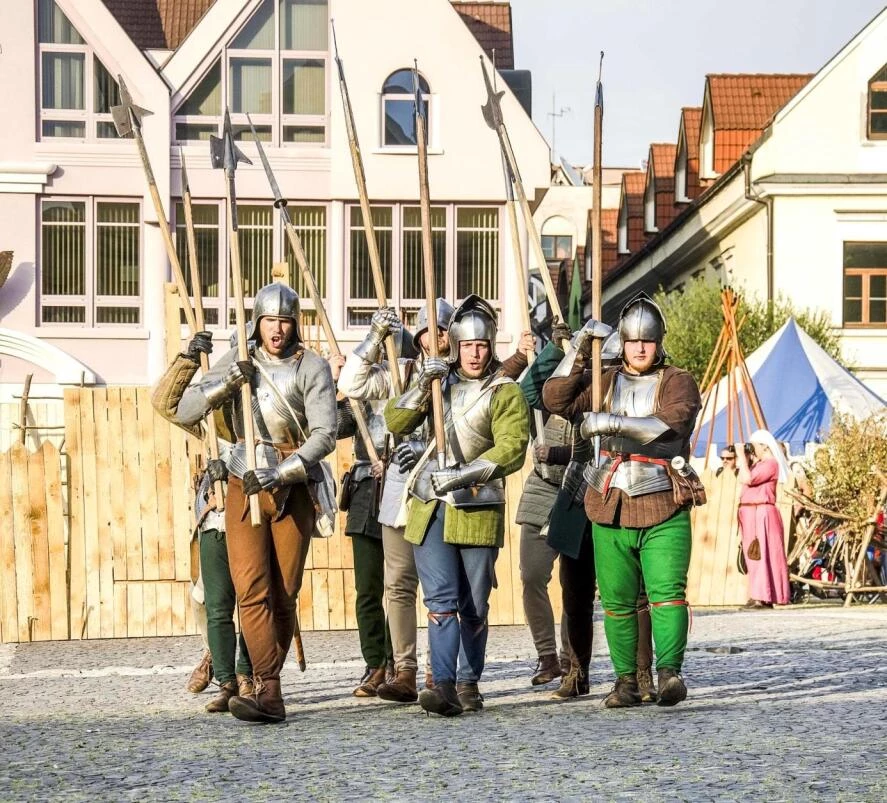
Contents
On 15 November 1315, something unprecedented took place. The heavily armoured cavalry of Duke Leopold of Austria and the militia of the ducal towns suffered a crushing defeat in the Battle of Morgarten against peasants from the remote Alpine valleys of Schwyz and elsewhere. The Austrian army, ready to punish the rebellious Confederates, pushed into the narrow road of Morgarten passage, where were stretched out and encountered a roadblock between a lake and a steep slope. The heavily armed mounted soldiers found themselves in a trap. The Swiss attacked the long column of cavalry, throwing rocks from above and frightening their horses. At the same time, the Swiss attacked from the back, throwing the helpless knights from their saddles and butchering them on the ground with halberds.
This was the first recorded use of these pole weapons - with axes on the end of a long wooden pole. After the attack at Morgarten, halberds became the iconic weapon of the Old Swiss Confederacy.
The Swiss Halberds
The earliest types of halberds had a simple, large blade, running up into a sharp point. They were similar to the weapons known as gisarme glaives, or guisarmes. The effectiveness of the weapon was further increased by an iron hook or thorn on the back side of the axe blade. The shaft was made of maple wood. Their cross-section was later square-shaped to prevent twisting and rotating in the hand, and they were also wrapped with leather for firmer grip. The hook was used to pull horsemen to the ground, catching them by the openings in their plate armour.
Handling the halberd with both hands required great strength and dexterity. The blows inflicted with the axe-head were terrible because the force of the impact was greatly increased by the length of the shaft. The Swiss became the best soldiers in Europe, capable of defeating cavalry armies. Their system of warfare became the driving force behind the revolution in modern warfare. One of their greatest victories was achieved on July 9, 1386 in the Battle of Sempach. The Chronicler summarizes the event as follows: "And so the fight was over, and the Swiss took possession of the battlefield, and carried away the splendid armours and dresses and jewels of the slain lords ...”
The Swiss tactic was very simple - the most important thing for the infantry was an ability to defend themselves against cavalry. At first, they mostly used terrain to gain advantage, but as soon as in the 15th century, their armies grew both in skill and self-confidence and were ready to face an enemy in any terrain. Their soldiers fought in “pike squares”, tactical formations of 10 times 10 men wielding pikes and halberds. Smaller formations of soldiers armed with crossbows (later firearms) stood nearby.
Swiss Halberd, ca. 1390
Guards of Important Men
From the 15th century onwards, the halberd found its way to armies of all European countries. It was used by mercenaries and royal guards, across England, Hungary, Poland and Lithuania and other countries. Most interestingly, however, it is still used as the ceremonial weapon of the Swiss Guard in the Vatican today.
In 1506, 150 Swiss mercenaries led by the Peter von Hertenstein arrived at the Basilica of Saint Peter, ready to serve Pope Julius II. Since then, the Swiss infantry has remained linked to the Pontifical Guard. Kaspar Silenen (Hertenstein's grandson), continued the Swiss Guard that protected the pope and his residence. He led the Guard until 1517, when he was killed in the Battle of Rimini.
The Sack of Rome took place in those years. On May 6, 1527, an army of 10,000 German Landsknechte, many of them Lutheran, who fiercely hated the pope, occupied Rome and began looting and slaying citizens. The Swiss Guard helped Pope Clement VII take refuge in the Castel Sant'Angelo, but they were under fire from German arquebuses. 147 men were killed, including the commander, Caspar Röist. The Swiss Guard was restored 20 years later by Pope Paul III and played a role in the Battle of Lepanto (7 October 1571).
Today, the Swiss Guard consists of 110 men.
The uniform of the Pontifical Swiss Guard, 19th century. Source: Wikipedia
Flemish Infantry Militia
Battle of the Golden Spurs (at the town of Kortrijk or Courtrai) took place on 11th July 1302 as the part of Franko-Flemish wars. It featured militia against cavalry units, and surprisingly, it was the Flemish militia that massacred the enemy forces. At seven o'clock in the morning, the French noble cavalry charged at quick trot into the battlefield, overcame the first obstacles, but got stuck in the mud and became an easy target for the enemy archers. After a partial success of their crossbowmen, the French cavalry launched a new attack. More obstacles stood in the way of the knights, and their horses struggled to move forward in the mud. The Flemish troops charged forward, armed with pole weapons.
The French commander, count Artois, was also killed in the clash. The Flemish soldiers then pursued the fleeing enemies to the gates of Lille and Tournai, killing many of them (hence the name “Bloed-Meersch” – “bloody marsh”). The victors then collected more than 500 pairs of spurs on the battlefield, which gave the battle its popular name – The Battle of Golden Spurs.
The Flemish militiamen were mostly foot soldiers, organized, trained and equipped within specialized guilds. They wore an armour and a tabard over it, with the emblem of their home town. They used swords or daggers, and a weapon with the humorously-morbid name goedendag, or "good day". The terrible weapon, used in close formation to knock down French knights, consisted of a wooden staff about 1.5 metres long, a sharp metal spike inserted by a tang at the end. This weapon combined the properties of a spear and a club and was particularly effective in close infantry formations.
Goedendag, 13th – 14th century.
Infantry Weapons and Weapons of the Poor
Many types of pole weapons have their origin in Italy and southern France. French freelance mercenaries, the so-called ribauds, who marched together with armies during the Hundred Years' War, searching for loot, used the weapon called the guisarme (“weeding iron”), originally developed by peasants by combining hand tools with a long pole. These pole weapons were used by the infantry in the 14th century and proved very effective. Initially, guisarmes consisted of a hook on the end of a long pole, later versions consisted of a blade and a small reverse spike.
Some other types of pole weapons were born in Italy. One of them was called stocco - an Italian lance point, essentially a kind of spit, with a long triangular blade. The scythe (falcio) inspired the weapon called “falcione”, or glaive, falchion, consisting of a single-edged blade on a pole. Glaives gradually developed and were used by palace guards.
Because Italy was divided into a number of states, glaives also appeared in many local versions, depending on the region. Corseque was a polearm with a three-lobe blade on a long shaft, with two shorter lateral blades bent to the side. It was used mainly by the Corsicans, hence the name Corseque. In mountainous Savoy, the polearm with double hook called forca became popular not only for fighting, but also for climbing down rocky terrains.
Voulge Spalding, 14th – 15th century.
Weapons from Scotland
In the 13th until 16th century, elite Scottish and Irish mercenaries, the Gallowglass, appeared on the scene.Their weapons included a long two-handed sword, and an axe mounted on a 1.8m long pole. This polearm also had a hook that was useful for throwing mounted knights off their saddle, and also for climbing walls. This weapon was called the Lochaber axe by the Scottish fighters, and sparr or the sparr axe by the Irish.
Swiss halberdier from the end of the 15th century. Original watercolour: Edgar Pachta

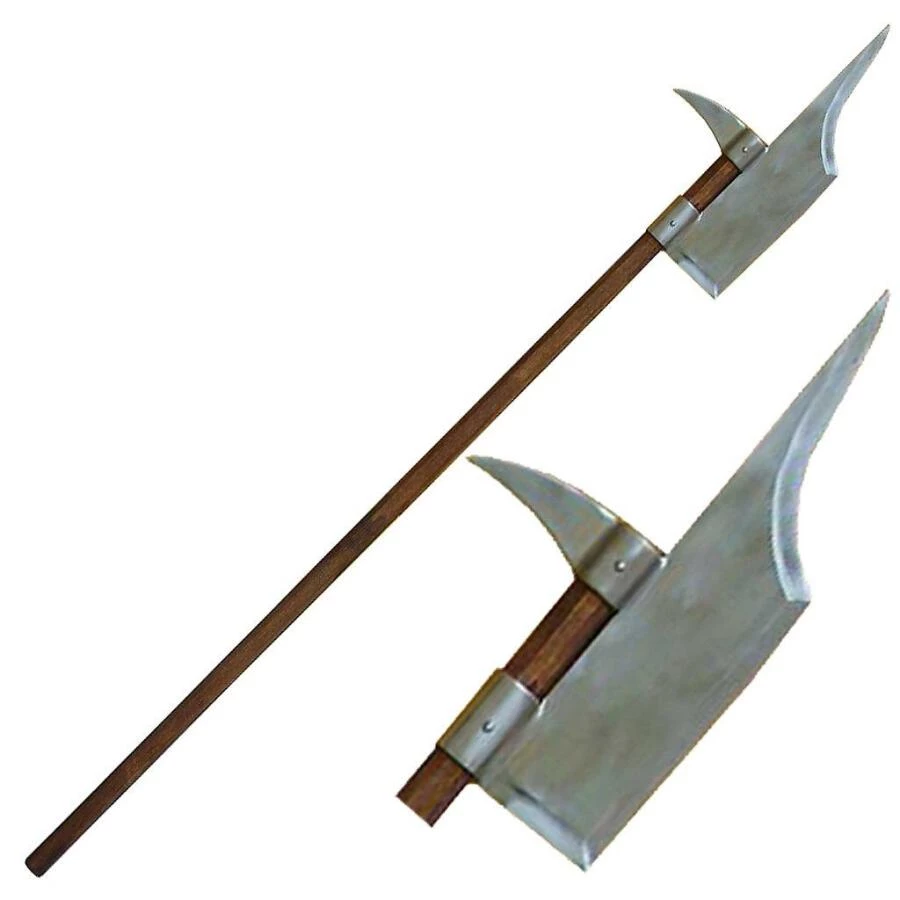
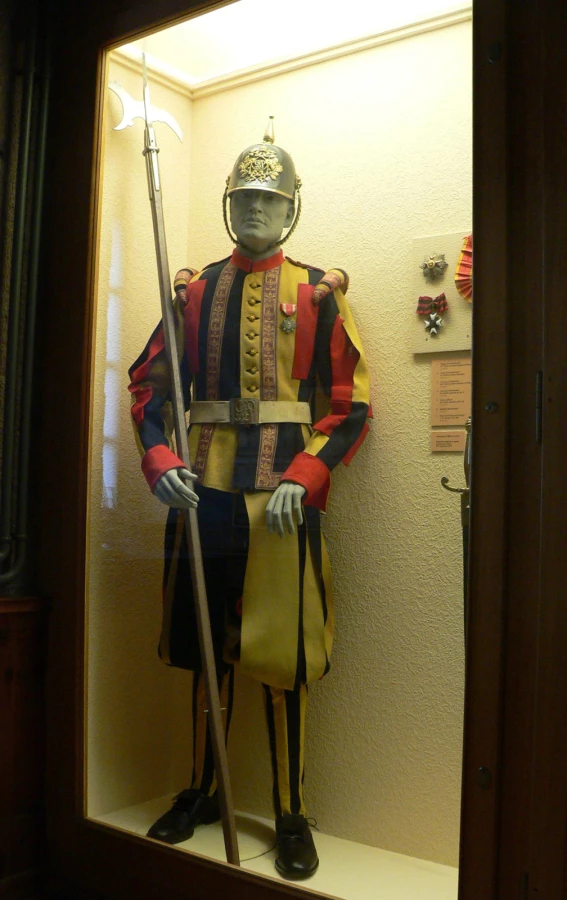
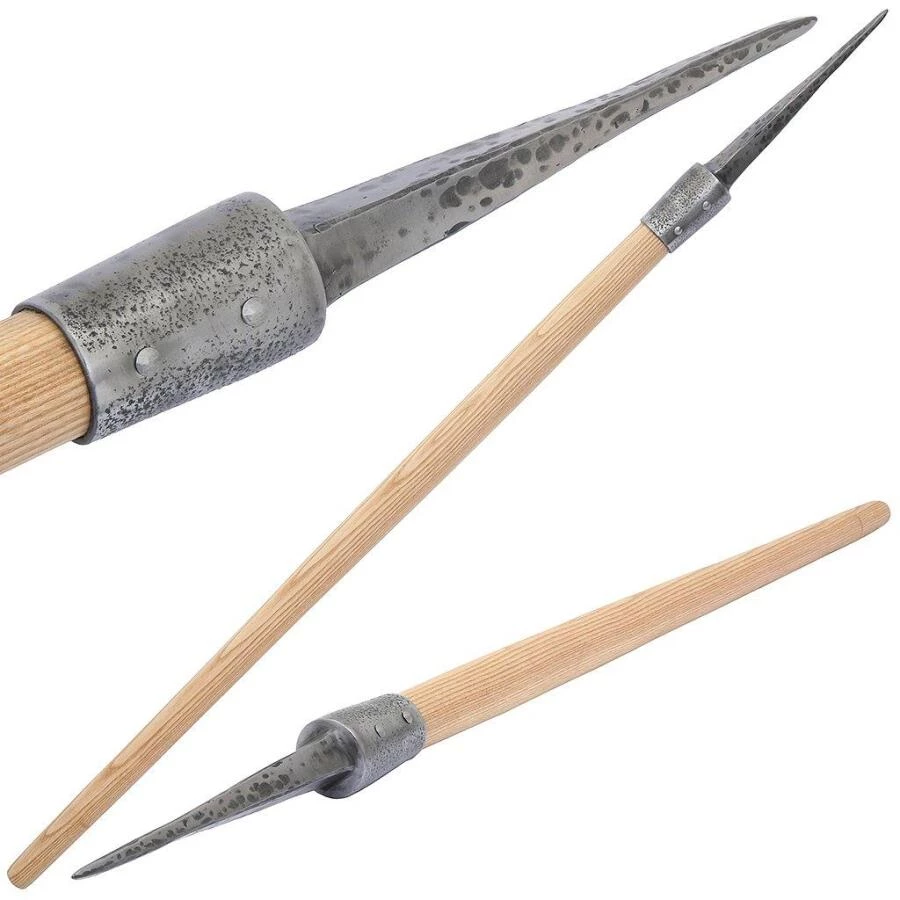

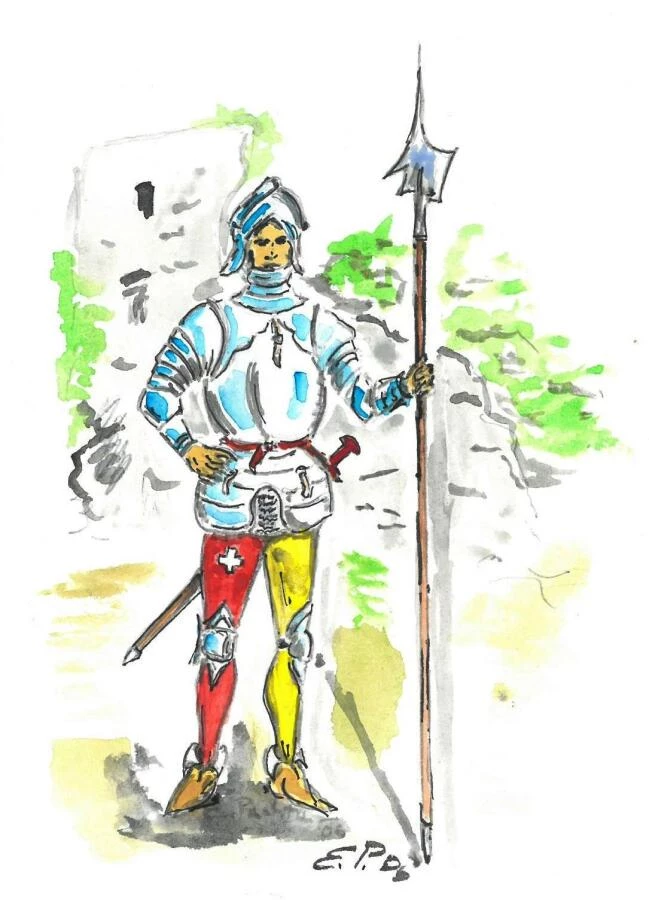
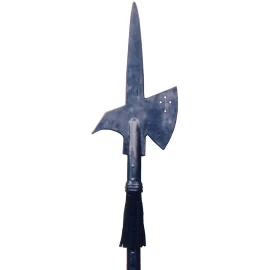
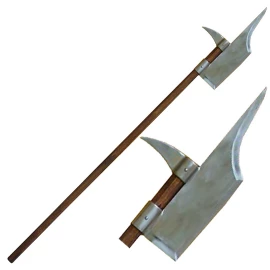
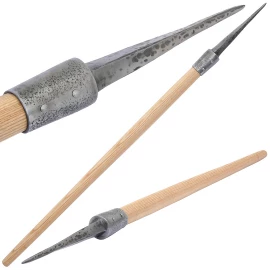
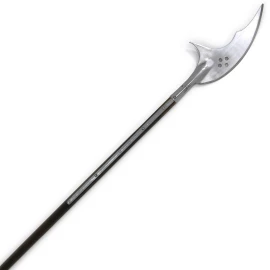
Comments